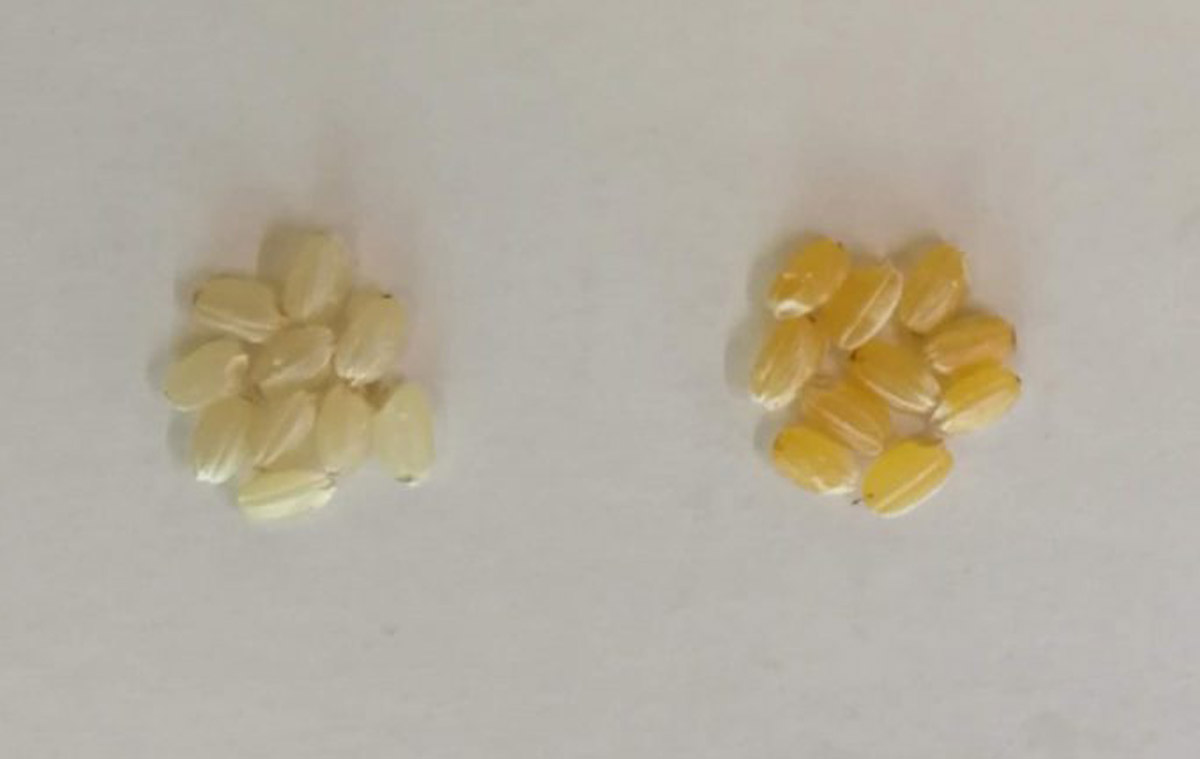
CRISPR Genome Editing Strategy Could Improve Rice, Other Crops
March 11, 2020| |
Scientists at the University of California Davis have genetically engineered rice to have high levels of beta-carotene using CRISPR technology.
"We used CRISPR to precisely target those genes onto genomic safe harbors, or chromosomal regions that we know won't cause any adverse effects on the host organism," said first author Oliver Dong, a postdoctoral scholar in the UC Davis Department of Plant Pathology and Genome Center.
The researchers precisely inserted a very large fragment of DNA that does not contain marker genes which are used in conventional genetic engineering. Marker genes are retained over generations, which often triggers public concern and stringent regulations of the transgenic products before their introduction to the marketplace. According to Dong, scientists have done targeted insertions before and without marker genes, but they haven't been able to do it with such big fragments of DNA.
This opens up the possibility that genes controlling multiple desirable traits, such as having high levels of beta-carotene as well as being disease-resistant or drought-tolerant, can be clustered at a single position within the genome.
For more details, read the news article in the Egghead.
| |
You might also like:
- CRISPR-Cas9 Used to Develop Lignin-enriched Rice
- CRISPR-Cas9 Used to Recover Red Pigmentation in Elite Rice Varieties
- Scientists Use CRISPR-Cas9 Technology to Improve Drought and Salt Tolerance in Rice
Biotech Updates is a weekly newsletter of ISAAA, a not-for-profit organization. It is distributed for free to over 22,000 subscribers worldwide to inform them about the key developments in biosciences, especially in biotechnology. Your support will help us in our mission to feed the world with knowledge. You can help by donating as little as $10.
-
See more articles:
-
News from Around the World
- Biotech Crops Market to Exceed US$37.46B by 2027
- Long Wait Over as Kenya Finally Commercializes Bt Cotton
- US Promotes GMO Education to Consumers through 'Feed Your Mind' Initiative
- CRISPR Genome Editing Strategy Could Improve Rice, Other Crops
- GM Food Label Is Unrecognized by Most Consumers in Brazil
- Research Team Discovers Genetic Diversity Improves Yield in Hybrid Crop Varieties
- EU Leading Scientists Warn: "European GMO Laws No Longer Fit"
-
Research Highlights
- Gene from a Mycoparasitic Fungus Confers Enhanced Resistance to Sclerotinia Stem Rot in Soybean
-
Plant
- CRISPR-Cas9 Speeds Up Domestication of African Rice Landraces
- Researcher Establishes CRISPR-Cas12b System for Plant Genome Engineering
-
Read the latest: - Biotech Updates (November 12, 2025)
- Gene Editing Supplement (October 29, 2025)
- Gene Drive Supplement (February 22, 2023)
-
Subscribe to BU: - Share
- Tweet

